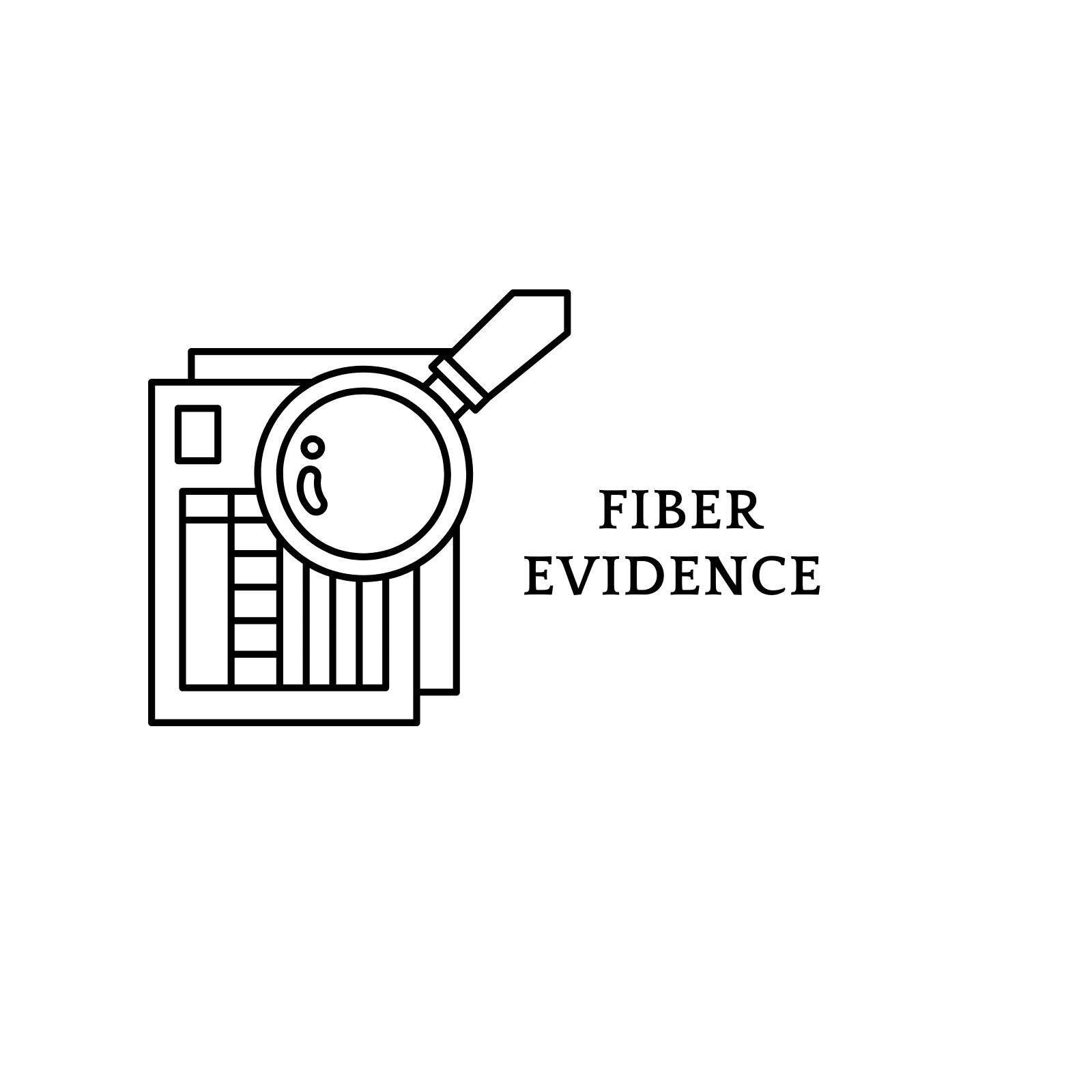Definition
A fiber is a long, thin substance characterized by its extended length compared to its thickness, commonly utilized in forming threads, reinforcing composite materials, producing fabrics, or serving structural roles in biological systems.
Fiber is a physical Evidence.
Classification
- Natural
- Synthetic
- Natural Fibers
Definition:
Natural fibers are thread-like materials that are directly sourced from nature, specifically from plants, animals, or minerals.
They are environmentally friendly, biodegradable, and widely used in the production of fabrics and other goods.
Categories of Natural Fibers:
A. Plant-Origin Fibers (Rich in Cellulose):
These fibers come from various parts of plants and are mainly composed of cellulose, a structural component in plant cell walls.
Common Examples:
Cotton – Harvested from the soft hairs surrounding cotton seeds.
Flax (Linen) – Extracted from the stalk of the flax plant.
Jute – Sourced from the long stems of the jute plant.
Hemp – Gathered from the fibrous stalk of the hemp plant.
Coir – Derived from the husk of coconuts.
Ramie – Taken from the stem bark of the ramie plant.
B. Animal-Origin Fibers (Protein-Based):
These are naturally produced by animals, usually from their fur, wool, or silky secretions.
Common Examples:
Wool – Sheared from the fleece of sheep.
Silk – Spun from the cocoons created by silkworms.
Alpaca – Sourced from the fine hair of alpacas.
Cashmere – Comes from the undercoat of cashmere goats.
Mohair – Obtained from the Angora goat.
Camel Hair – Collected from the coats of camels, especially during shedding.
C. Mineral-Based Natural Fibers:
These fibers originate from naturally found minerals in the earth.
Example:
Asbestos – A mineral fiber historically used for fireproofing and insulation; now largely restricted due to health concerns.
- Synthetic Fibers
Definition:
Man-made fibers are produced using chemical processes.
Mainly made from petroleum-based materials, not plants or animals.
Manufactured in factories.
Valued for strength, durability, and versatility.
Types of Synthetic Fibers:
- Petroleum-Based Fibers:
Made by chemically linking molecules from crude oil or natural gas.
Examples:
Nylon: Strong, elastic, abrasion-resistant.
Polyester: Durable, wrinkle-resistant, quick-drying.
Acrylic: Lightweight, warm, wool substitute.
Spandex (Lycra/Elastane): Highly stretchable, used in sportswear.
- Regenerated Cellulose Fibers:
Made by chemically processing natural cellulose (wood pulp).
Examples:
Rayon: Soft, breathable.
Viscose: Silky texture, a type of rayon.
Modal: Durable and soft rayon variant.
Lyocell (Tencel): Eco-friendly, strong, breathable.
Collection, Packaging & Preserving
Collection
Wear protective equipment: Use gloves, a mask, and a lab coat to prevent contaminating the evidence.
Prepare necessary tools: Gather stainless steel tweezers, clean forceps, a magnifying glass or microscope, lint-free cloth or adhesive tape, and suitable containers such as paper envelopes or glass vials.
Visual examination: Carefully inspect surfaces like clothing, furniture, or carpets for fibers. Utilize a magnifying tool if needed.
Methods for collecting fibers:
Tweezers: Carefully pick up single fibers one at a time.
Tape lifting: Press clear adhesive tape onto the fiber-covered area, then transfer the tape onto a clean paper or glass slide.
Vacuuming: Employ a forensic vacuum fitted with a filter to collect fibers from larger surfaces, ensuring the filter is stored securely afterward.
Fabric removal: Cut or remove small pieces of fabric when fibers are tightly embedded or difficult to lift.
Prevent contamination:
Frequently change gloves during collection.
Keep fibers collected from different locations separate to avoid mixing.
Packaging
Select suitable containers:
Opt for breathable options like paper envelopes or bags to prevent moisture accumulation that could harm fibers. For larger or delicate items, use glass vials or sturdy cardboard boxes. Avoid plastic packaging, as it can create static electricity that may damage or displace fibers.
Label clearly:
Include important details on each package, such as:
Case identification number
Description of the evidence (e.g., “blue cotton fiber from suspect’s jacket”)
Date and time when collected
Name and signature of the person who collected the evidence
Seal securely:
Close packages with tamper-proof tape to deter unauthorized opening. Sign or initial the seal to preserve the chain of custody and evidence integrity.
Separate packaging:
Individually wrap each item to avoid contamination or fiber mixing. When multiple fibers come from the same source, keep them together but ensure they remain properly secured.
Proper storage:
Keep packaged evidence in a cool, dry place to prevent mold and fiber deterioration. Protect them from sunlight and extreme temperature fluctuations.
Maintain documentation:
Record all packaging and storage details accurately in the chain of custody log for traceability.
Preserving
Maintain optimal environmental conditions: Store fibers in a cool, dry place to avoid moisture, heat, and sunlight damage.
Use appropriate containers: Use breathable materials like paper envelopes to prevent moisture and static; avoid plastic unless specially designed.
Prevent contamination: Handle fibers with clean gloves, avoid direct contact, and change gloves often.
Limit exposure: Keep fibers away from open air as much as possible; store promptly after collection.
Maintain chain of custody: Record all handling, storage conditions, and transfers to preserve evidence integrity.
Regular inspection: Check stored fibers periodically for signs of damage or contamination.
Forensic Examination of Fibers
- Visual Examination:
Initial inspection using naked eye or simple magnifiers like hand lenses or stereomicroscopes. Look for:
Color and shade variations
Surface texture and shine (matte or glossy)
Length, diameter, and shape
Damage, contamination, or treatments like dyes or coatings
This helps classify fibers and pick samples for further tests.
- Physical Examination:
Tests mechanical properties to identify fiber types:
Strength and elasticity: Measures stretch and resistance to breaking. Synthetics usually stretch more.
Diameter: Measured with micrometers or calibrated microscopes.
Surface texture: Feel and touch differentiate wool (soft, crimped) from synthetic (smooth).
Cross-section shape: Unique shapes visible under a microscope (round, trilobal, etc.)
These tests are mostly nondestructive and guide further analysis.
- Chemical Examination:
Analyzes fiber makeup through reactions:
Burn tests: Observe burning behavior, smell, ash, and speed. Cotton burns like paper; nylon melts with chemical odor.
Solubility: Fibers dissolve in certain chemicals (acetate in acetone; polyester resists).
Staining and dye tests: Reveal fiber types and presence of dyes or finishes.
Chemical tests show fiber’s polymer or protein composition.
- Optical Examination:
Uses microscopy for detailed fiber study:
Light microscopy: Uses transmitted/reflected light to view morphology and color.
Polarized light microscopy (PLM): Shows birefringence patterns to distinguish fiber types.
Comparison microscopy: Side-by-side fiber comparison under same magnification, vital for matching samples.
Optical exams connect visual and instrumental methods without damaging fibers.
- Instrumental Examination:
Advanced tools give precise identification:
FTIR: Infrared spectra reveal molecular composition, differentiating fiber types and blends.
SEM: High-resolution images of fiber surface and cross-section, showing damage. Can combine with EDS for elemental data.
Chromatography (GC-MS): Analyzes dyes and finishes, creating chemical fingerprints linking fibers to sources.
Microspectrophotometry: Measures exact color spectra to tell apart similar fibers.
Instrumental methods are sensitive, specific, and confirm fiber identity conclusively.
Questions and Answers
- Q: What are natural fibers derived from?
Ans: Natural fibers come from plants, animals, or mineral sources. - Q: Name two examples of plant-based fibers.
Ans: Cotton and flax are both plant-derived fibers. - Q: What is the main component of plant-based fibers?
Ans: Cellulose is the primary component in plant-based fibers. - Q: How are animal-based fibers different from plant-based ones?
Ans: Animal fibers are protein-based and come from hair or secretions, unlike plant fibers made of cellulose. - Q: What is asbestos, and why is it classified as a fiber?
Ans: Asbestos is a mineral fiber used for insulation, once valued for heat resistance. - Q: Define synthetic fibers.
Ans: Synthetic fibers are man-made using chemical processes, mainly from petroleum. - Q: Which fiber is known for high stretchability and is used in activewear?
Ans: Spandex (also called Lycra or Elastane). - Q: What are regenerated synthetic fibers made from?
Ans: They are made by chemically altering natural cellulose from sources like wood pulp. - Q: Give two examples of regenerated synthetic fibers.
Ans: Rayon and lyocell. - Q: Why is polyester a popular synthetic fiber?
Ans: It’s durable, wrinkle-resistant, and dries quickly. - Q: Why must gloves be worn during fiber collection?
Ans: To avoid contaminating the evidence with foreign fibers. - Q: What collection tool is best for picking single loose fibers?
Ans: Stainless steel tweezers are ideal for isolating single fibers. - Q: How is tape lifting used in fiber collection?
Ans: Adhesive tape is pressed onto the surface to lift fibers, then placed on clean backing. - Q: When is vacuuming used in fiber collection?
Ans: For large surfaces where many fibers may be dispersed. - Q: What’s the risk of using plastic containers for fiber storage?
Ans: Plastic can create static that may move or damage fibers. - Q: Why is proper labeling important in packaging?
Ans: It ensures traceability and supports chain of custody in legal cases. - Q: What should each fiber evidence package include on its label?
Ans: Case ID, item description, date/time, and collector’s name. - Q: Why must fiber evidence be sealed with tamper-proof tape?
Ans: To prevent unauthorized access and preserve integrity. - Q: Why is separate packaging essential for fiber samples?
Ans: To prevent cross-contamination between items. - Q: What are the ideal storage conditions for fiber evidence?
Ans: Cool, dry, and away from direct sunlight or extreme heat. - Q: What is the goal of visual examination in fiber forensics?
Ans: To assess surface features, color, and shape using simple magnification. - Q: How is fiber strength tested in physical examination?
Ans: By checking how much a fiber can stretch before breaking. - Q: What property is studied under polarized light microscopy?
Ans: Birefringence, which helps differentiate fiber types. - Q: How does FTIR help in fiber analysis?
Ans: It identifies molecular structures by measuring infrared absorption. - Q: What does SEM reveal in fiber investigation?
Ans: It shows detailed images of the fiber’s surface and damage at high resolution. - Q: What is the purpose of chemical burn tests?
Ans: To observe burning behavior and identify fiber type by smell and residue. - Q: What does chromatography help determine in fiber samples?
Ans: The chemical makeup of dyes and finishes on fibers. - Q: How does solubility testing aid fiber identification?
Ans: It shows whether a fiber dissolves in specific solvents, narrowing down type. - Q: What is microspectrophotometry used for?
Ans: It analyzes fiber color at a spectral level for precise comparison. - Q: Why is chain of custody critical in fiber forensics?
Ans: It documents who handled the evidence, ensuring reliability in court



